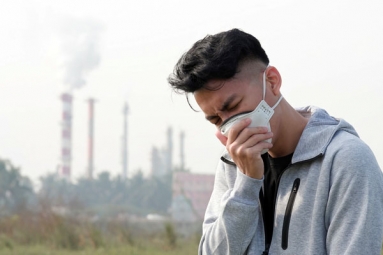
(Image source from: stuff.co.nz)
The data released by United Nations Tuesday said that deaths related to HIV fell to around 770,000 in 2018, some 33 percent lower than in 2010, but warned that global efforts to do away with the disease were stalling as funding dries up.
About 37.9 million people are living with HIV currently - a record 23.3 million of those have access to some Antiretroviral Therapy (ART), UNAIDS said in its annual report.
Focusing on the enormous progress made since the height of the AIDS epidemic in the mid-1990s, the report showed that the number of people breathing one’s last from the disease fell from 800,000 in 2017 to 770,000 last year. The figure was down by more than a third from 2010 when there were 1.2 million AIDS-related deaths.
But it also exposed helplessness in the world's fight against AIDS. The AIDS-related deaths in Africa, the continent most affected by the epidemic, have plummeted this decade, Eastern Europe has seen the death toll rise 5 percent and the Middle East and North Africa 9 percent. Year-on-year, those same regions saw a 29-percent and 10-percent rise in new infections, respectively.
"We urgently need increased political leadership to end AIDS," said Gunilla Carlsson, UNAIDS executive director.
"Ending AIDS is possible if we focus on people, not diseases... and take a human rights-based approach to reach people most affected by HIV."
Decades of research have yet to yield a cure or vaccine for the Human Immunodeficiency Virus (HIV), which has infected almost 80 million people and killed more than 35 million since the early 1980s.
The UN said that more than half of new HIV infections worldwide come from "key populations" - intravenous drug users, gay men, transgender people, sex workers, and prisoners. Despite this, the report said that under 50 percent of these at-risk populations were reached by HIV prevention services in more than half of countries. Another vulnerable group is children, with more than 160,000 new HIV infections last year.
That is 41 percent lower than in 2010, but far off the mark countries set themselves of no more than 40,000 new cases worldwide each year by 2018. There remains a noticeable disparity in new infection rates among young men and women, with young women 60 percent more likely to pick up HIV than young men of the same age.
The report further warned that a lack of political will coupled with decreasing finance risked undermining the progress made up to now. Early this year $19 billion (17 billion euros) was made accessible for AIDS response, more than $7 billion short of the estimated $26.2 billion needed by 2020.
By Sowmya Sangam







